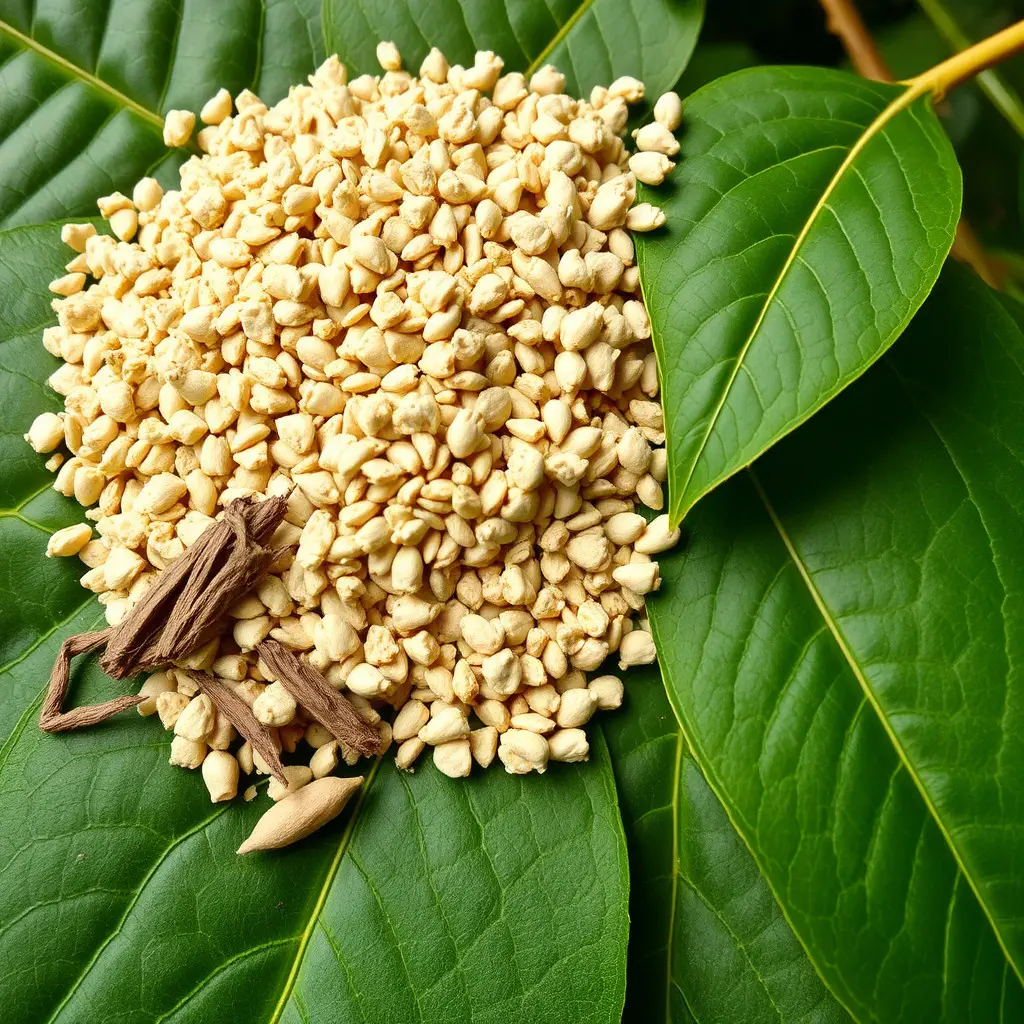Athletes considering kratom, a natural supplement from Southeast Asia with alkaloids that may enhance energy and endurance, for sports nutrition should proceed with caution. While it's touted for its potential to improve performance and reduce fatigue through its effects on pain management and mood elevation, there is still much to understand about its impact on athletic activities. Kratom's alkaloids engage opioid receptors similarly to the blue lotus, a historical psychoactive substance, which can lead to complications in drug testing for sports. Specifically, kratom and blue lotus smoke can result in positive outcomes on drug tests designed to detect opioids, a violation of anti-doping regulations in professional sports. Therefore, it is essential for athletes to consult with medical professionals and thoroughly review the rules set by their sport's governing bodies before using kratom or consuming blue lotus, as both substances can lead to unwanted consequences due to their presence on drug testing panels. The key takeaway is that natural does not equate to compliant with sports regulations, and careful consideration must be given to the implications of drug testing and performance enhancement when incorporating these substances into a sports nutrition regimen.
Exploring the intersection of sports nutrition and kratom’s role in athletic performance and recovery, this article dissects the scientific evidence supporting its use. We delve into how kratom can influence an athlete’s endurance and recovery processes, examining the nuanced effects of blue lotus smoke within this context. Furthermore, we navigate the complexities of drug testing in athletic competitions, providing clarity on kratom’s standing in such environments. Join us as we unravel the intricacies of integrating kratom into a sports nutrition regimen while considering the implications for competitive athletes.
- Understanding the Intersection of Sports Nutrition and Kratom Use
- The Science Behind Kratom's Impact on Athletic Performance and Recovery
- Navigating Blue Lotus, Smoke, and Drug Testing in Athletic Competitions with Kratom Considerations
Understanding the Intersection of Sports Nutrition and Kratom Use

When athletes or individuals engaged in regular physical activity consider supplementing their sports nutrition regimen, the intersection of performance enhancement and natural products comes into play. Kratom, derived from the leaves of the Mitragyna speciosa tree, traditionally known as the blue lotus, has garnered attention within athletic communities for its potential ergogenic properties. Its alkaloids, such as mitraphylline and 7-hydroxymitragynine, are believed to influence energy levels and endurance, which can be advantageous in sports training and competition. However, it’s crucial to navigate this integration with caution, as kratom’s effects on athletic performance are not fully understood and can vary significantly among individuals.
In the context of sports nutrition, kratom may offer a natural alternative to stimulants typically used for energy and focus. Its ability to potentially mitigate fatigue and enhance mood could be beneficial for endurance athletes or those requiring sustained effort over extended periods. However, the use of kratom must be approached with a clear understanding of its pharmacological effects, as it can interact with various physiological processes. Additionally, individuals should be aware that kratom may produce positive results on drug tests designed to detect opioids, which can be a significant consideration for those subject to blue lotus smoke drug test policies or similar screenings. It’s imperative for athletes to consult with healthcare professionals and adhere to the guidelines set forth by their sport’s governing body when considering kratom as part of their sports nutrition strategy.
The Science Behind Kratom's Impact on Athletic Performance and Recovery

Kratom, a plant native to Southeast Asia and related to the coffee family, has garnered attention in the realm of sports nutrition due to its potential impact on athletic performance and recovery. The science behind kratom’s effects is rooted in its active alkaloids, mitragynine and 7-hydroxymitragynine, which interact with the body’s opioid receptors. These compounds are believed to influence pain perception, mood enhancement, and energy levels—key factors for athletes seeking to enhance their performance and endurance. Studies suggest that kratom can help in managing pain associated with intense training, thereby allowing athletes to push their limits without the risk of addictive prescription opioids.
In terms of recovery, some preliminary research indicates that kratom may aid in muscle relaxation and reduce post-exercise soreness, which is crucial for quicker recovery between training sessions or competitions. Additionally, its stimulant properties can help athletes maintain a high level of focus and energy during prolonged activities, which is where the comparison to the historical use of blue lotus becomes pertinent. While the blue lotus has a reputation for its calming effects and was sometimes used as a sedative or entheogenic substance, kratom’s alkaloid profile provides a more nuanced effect—stimulating in lower doses and sedating in higher ones. This dichotomy can be advantageous for athletes who require both energy and recovery support. However, it’s important to note that the use of kratom is subject to drug testing policies, as some organizations consider it a banned substance. Athletes must be aware of the legal status of kratom in their sport and the potential for false positives on drug tests when blue lotus smoke drug test protocols are involved. As with any supplement or drug, athletes should consult with healthcare professionals and adhere to the guidelines set forth by their sports governing bodies.
Navigating Blue Lotus, Smoke, and Drug Testing in Athletic Competitions with Kratom Considerations

When integrating sports nutrition with kratom, athletes must be cautious about the specific strains and their interactions, especially with substances like Blue Lotus. Blue Lotus, often consumed as a tea or extract, is known for its psychoactive properties, which can mimic those of kratom. The alkaloids present in both substances can influence performance and well-being, but their presence in the body can raise flags during drug testing. Athletes competing at professional levels are subject to rigorous drug testing policies, and certain compounds found in Blue Lotus and kratom can trigger positive tests for opioids. It is imperative for athletes to understand that the metabolites produced by these substances can be indistinguishable from those of illicit drugs like opium. Therefore, careful consideration must be given to the timing of kratom consumption in relation to competitions and testing schedules to avoid any potential violations of anti-doping regulations. Additionally, the smoke associated with consuming Blue Lotus can be a giveaway and lead to unwarranted scrutiny or penalties. Athletes should be aware that natural does not always equate to acceptable within the framework of athletic drug policies, making it crucial to consult with knowledgeable nutritionists or healthcare providers who specialize in sports medicine before incorporating kratom or Blue Lotus into their training and nutrition regimen.
Incorporating kratom into sports nutrition regimens is a nuanced topic that requires careful consideration, particularly regarding its impact on athletic performance and recovery, as well as the potential for drug testing complications due to its close relation with blue lotus smoke. The article has shed light on the scientific findings surrounding kratom’s effects and offered guidance on how athletes can safely navigate this territory. It is clear that while kratom may offer certain benefits, it is imperative for athletes to be fully aware of the regulations and implications associated with its use, especially in competitive settings. As sports science continues to evolve, maintaining transparency and adherence to governing body guidelines remains key for athletes seeking an edge without compromising their eligibility or health.






